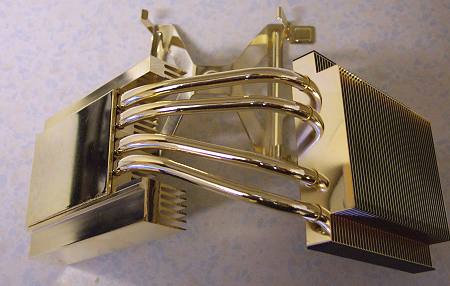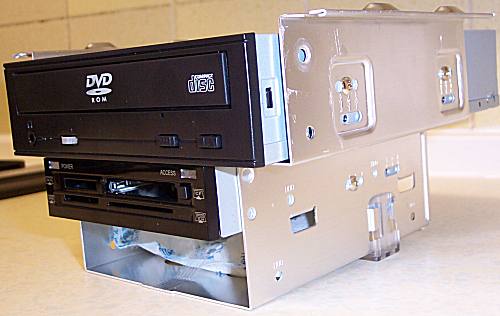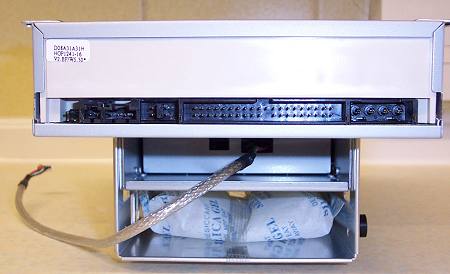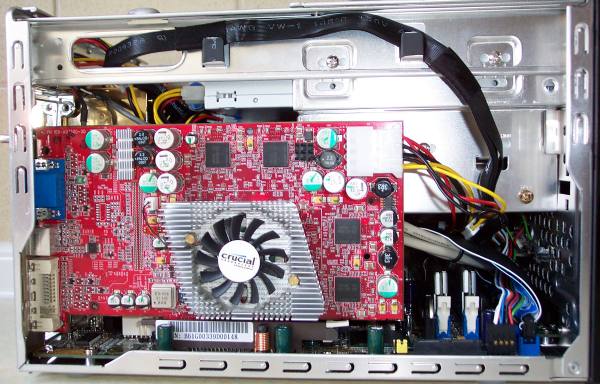Internals II
FireWire, 10/100 LAN, and decent onboard sound are all driven by various ASICs. They're conveniently located near the retention bracket.
Nothing remarkable here. There's no Gigabit LAN. It's plain 10/100 - driven by Realtek's single-chip RTL8100B Ethernet controller. The words ubiquitous and Realtek should be synonyms. The ever-present ALC650 sound CODEC provides 6-channel support. Remember that Shuttle adds in S/PDIF support on the back panel. Another usual suspect, this time the VIA VT6307 2-port FireWire controller provides you know what.

We couldn't let this opportunity pass without having a look at the cooler in more detail. It certainly feels more substantial than other XPCs', and it creates an impression. The RefleXion's net weight is quoted at 2.85kg - the same as most other Intel XPCs. It does feel heavier, though. You now seem to wonder why it needs a special edition for all these extra features. Is it a case of the public not accepting the ~ £250 price tag, or is it Shuttle allowing the consumer to choose the extras they really want. They're all available as options. It's difficult to speculate.
A few shots now to complete the internal examination.

That's what you can't see internally. The card reader takes up the space for a floppy drive's mounting. That leaves a single 3.5" area for the hard drive. That's perhaps one of the drawbacks of such a small design. Unless you remove the card reader or DVD-ROM drive, there's no place to put a second RAID-forming hard drive. We managed to test with dual Western Digital Raptors. Both had to be positioned outside the case. What use is the ICH5R (with the emphasis on RAID) if you need to sacrifice either reader or drive ?.

The cable tails off (literally) to a small header on the side of the RefleXion's interior. It sits next to another that links up to the Wireless module. The tray then is pushed back into the chassis. It makes sense to disconnect the reader's cable from the chassis side and not the other way around.

The black cables give it a professional look. The Radeon 9800 Pro provides the oomph in the AGP department. We'll be looking at both AGP and onboard performance in our formal benchmarking section.









